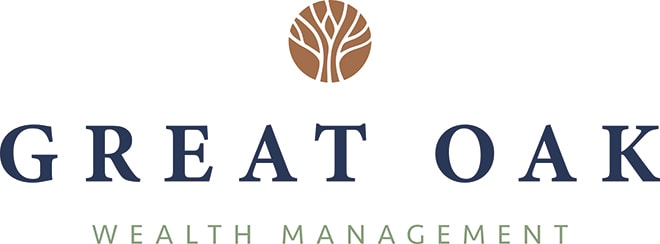A taxable investment account is an ideal savings tool for those who want to save additional funds. Whether you wish to earmark extra beyond the retirement plan limits or for other non-retirement goals, the taxable investment account is an often overlooked way to help fill the savings gaps, particularly if you want to retire early.
We covered what a taxable investment account is in our blog, How to Maximize Your Wealth with a Taxable Investment Account. Now, we will review when and why you should open one.
When should you open a taxable investment account?
Although a taxable account has many advantages, contributing to a 401k, IRA, or other retirement account would be best before investing in a taxable account. The tax benefits (pre-tax or Roth), retirement savings objective, and possible employer match are unbeatable compared to a taxable account.
Also, while the taxable account is an ideal spot for extra cash, it should complement your emergency fund, not replace it. Even if that means a money market fund within your taxable account, having cash on hand for emergencies eliminates the need to sell an investment at a less-than-ideal time.
We recommend the following order of importance regarding saving and strengthening your investing and retirement planning.
- Contribute up to your employer retirement plan match.
- Max out an HSA if you have a high-deductible health care plan.
- Max out a Roth IRA or backdoor Roth IRA if you qualify.
- Max out your retirement plan contributions.
- Max out your after-tax (non-Roth) 401k contributions if allowed.
- Invest in a taxable account.
We also need to mention using a 529 if you want to save for college tuition. The tax and FASFA calculation advantages of a 529 beat the taxable account when counting assets for financial aid. Where that fits in the above list depends on how much of the higher education cost you want to cover for your children, although, remember, your retirement comes first.
Why should you open up a taxable investment account?
Other than just wanting to invest more and having the extra cash, there are three reasons to open a taxable account.
- Non-retirement goals
- Bridging the retirement gap
- Retirement income tax-diversity
Non-retirement goals
You have other goals besides retirement —a first home, second home, new boat, RV, etc. The key is your timeline. How soon do you want to make that big purchase?
We do not recommend aggressively investing when you have a purchase you want to make within five years. The risk of loss, resulting in a delay in reaching your savings goal, is counterproductive. Aggressively saving, yes! Those funds should primarily be in a safer, high-yield savings account or CDs.
You can mix some equities in your taxable investment account portfolio for goals more than five years away to boost growth. Still, it would be best to determine your risk comfort level and potential for loss versus your timeline.
Bridge the retirement gap
Now we’re getting to the exciting stuff. If you retire in your early 50s, have all your retirement savings in an IRA or 401k, and take any distributions before 59 1/2, you’ll be subject to a 10% penalty, although there are two exceptions.
- Penalty-free withdrawals if you retire at 55+: You can take funds out of your 401k without penalty if you retire at age 55+. This exception does not apply to IRAs. The problem is your employer may restrict how often or how flexible distributions from a 401k can be. It is frustrating because the funds are yours, and you should be able to do what you want, but it still beats a penalty for early distributions.
- The 72t rule: This section of the Internal Revenue Code outlines making early withdrawals from certain qualified retirement accounts, like a 401(k) or an IRA, without paying penalties. A 72(t) lets you specify a schedule of annual substantially equal periodic payments (SEPP). You must take at least one a year for five years or until you turn 59 ½. If you miss just one, you’ll owe early withdrawal penalties on all funds you’ve taken out under the strategy. The 72t rule is complicated and will be the topic of an upcoming blog post.
A taxable investment account could come into play if you don’t qualify for the above exceptions or do not want to utilize them. It is a perfect way to bridge the income gap between retirement and 59 1/2, eliminating the need to jump through any hoops to access your retirement funds. Since you can take distributions anytime from a taxable account, you can tap it without worry. The key is planning early, maxing out your retirement accounts, and significantly saving in a taxable account.
Create retirement income tax-diversity
Having options is always good. That also applies to retirement income. It allows you to have more control over your tax liabilities in retirement. We’ve previously mentioned that there is no income tax on distributions from a taxable account.
Throw that into the mix of pre-tax retirement accounts, Roth retirement accounts, and HSAs, and voila, you have better management of your taxes in retirement. You can come up with all kinds of strategies to save money in retirement. Some of the possibilities;
- Qualify for the premium tax credit
- Roth Conversions.
- Avoid or minimize the Medicare Premium Surcharge
- Have better control over Required Minimum Distributions (RMDs)
Premium Tax Credit
The majority of folks no longer have retiree medical benefits. If you retire before age 65 and cannot jump on a spouse’s plan, you must buy health insurance. If you purchase insurance through a Health Insurance Marketplace, you may be eligible for the Premium Tax Credit (PTC), which can lower your monthly insurance premium.
Your income, household size, and cost of living standards based on your zip code determine the amount of your credit. Check out this handy calculator to see your potential credit, or visit healthcare.gov to learn more and find your state marketplace.
The point here is if you’ve built enough of a taxable account, you could live on those distributions alone. That would result in very little taxable income and a significant premium tax credit. The income tax-free distributions of investment accounts could be very convenient.
Convert to a Roth
If you’re using a taxable account to bridge the retirement gap, meaning you’re in a low tax bracket, it could have a double benefit of paying the tax for a Roth Conversion or multiple Roth conversions spread out over a few years. A Roth Conversion is one of our favorite strategies for a taxable investment account.
For a Roth conversion to make sense, you need funds from outside the pre-tax qualified retirement you’re converting. Otherwise, it reduces your tax-free growth. Also, if you are under 59½, you’ll incur a 10% penalty on the amount you don’t convert to the Roth IRA, meaning the amount that goes towards the taxes. If you don’t have the funds to pay taxes from another source, you probably shouldn’t convert!
Besides RMDs and lower taxes, Roth conversions can help you avoid or minimize Medicare Premium Surcharges.
Medicare Premium Surcharges
Although everyone pays for Medicare, your monthly premiums will increase if your income crosses certain thresholds. The Medicare income-related monthly adjustment amount, or IRMAA, is a surcharge on Medicare Premiums for Medicare Part B (medical insurance) and Part D prescription drug plans. That’s just a fancy name for a tax.
The surcharge for a year is set using the Modified Adjusted Gross Income (MAGI) reported on the tax return filed two years previously. For example, your 2022 tax return will be used to set premiums paid in 2024. Your returns filed two years earlier are the most recent available to Social Security for setting the premiums. MAGI is adjusted gross income, which includes retirement plan distributions, as shown on the tax return, plus
- tax-exempt interest
- tax-exempt foreign income
- Non-taxable Social Security benefits
Guess what? Roth IRA distributions are not included in the IRMAA calculation. This is important since even if your income is $1 over one of the multiple thresholds in the chart below, it could cost you hundreds or thousands in higher premiums annually.
Visit the informative Medicare.gov website to see how much your premiums could rise depending on your income.
The bottom line – controlling RMDs with a taxable investment account
The possibilities and scenarios are limitless and flexible with a taxable investment account. One year, you can focus on Roth conversions and maybe the subsequent focus on getting the Premium Tax Credit. Or vice versa. The overall retirement income planning goal is to control taxes (and Medicare costs). Managing them will always result in controlling RMDs. You want the level of RMDs to be just right, not too low or too high. Planning with pre-tax, Roth, and taxable investment accounts will provide the tools and flexibility to control your taxes, RMDs, and Medicare surcharges, leaving more of your retirement savings in your pocket.
A taxable investment account is another tool in your retirement workbelt that can help you succeed. It may not be the most talked about savings option, but overlooking it could limit your options to save taxes in retirement.








